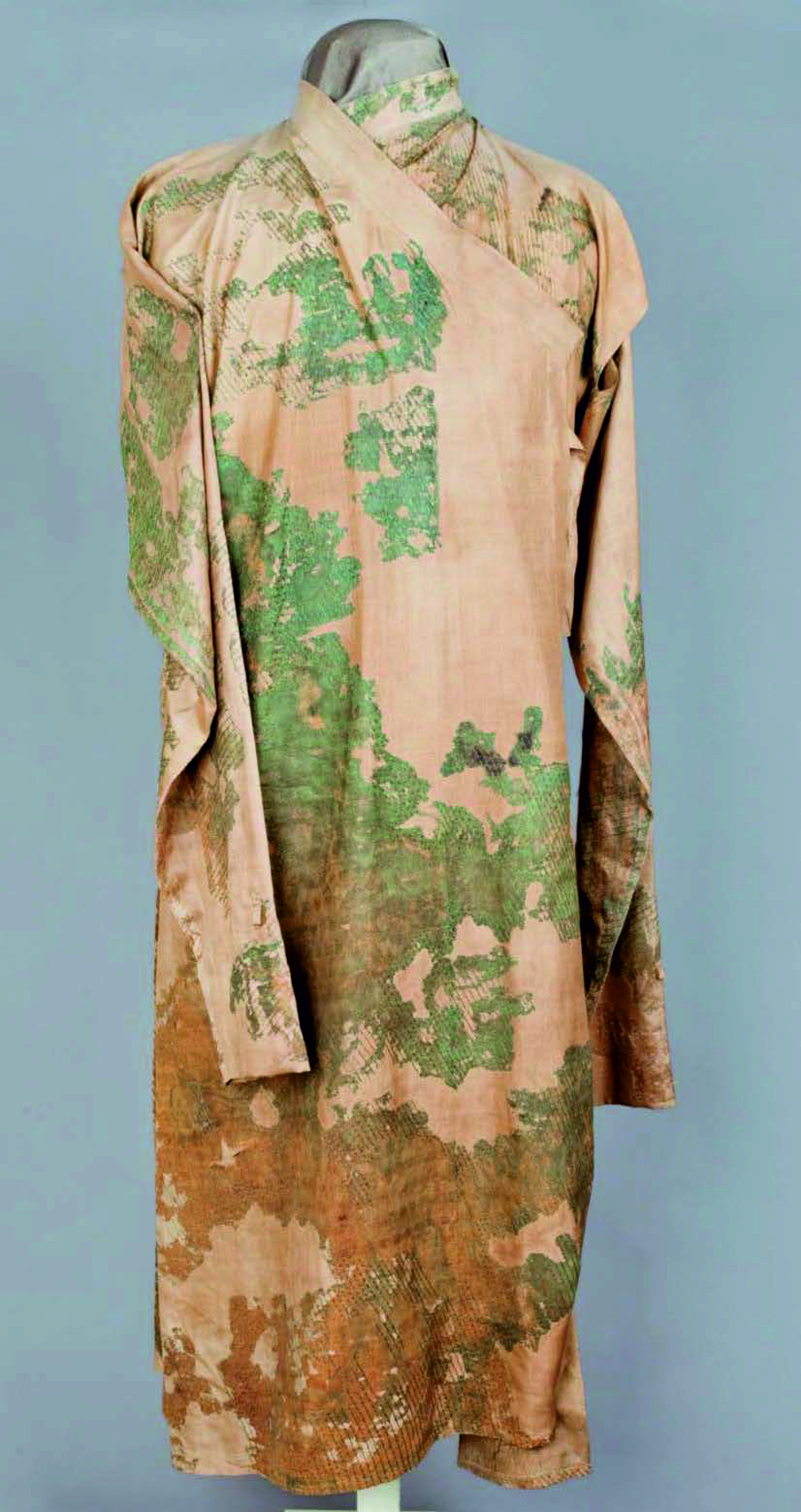About Some Aspects of Ethnic–Cultural and Confessional Processes in Azerbaijan in the XIII–XIV Centuries
DOI:
https://doi.org/10.24852/2587-6112.2024.3.420.428Keywords:
archaeology, Azerbaijan, Mongol Empire, Mongol period, ethnic-cultural processes, Ilkhanids, HulagidsAbstract
The article deals with the study of ethnic-cultural and confessional processes in Azerbaijan in the XIII–XIV centuries. The methodological basis of the study was the basic principles of historical knowledge and a comprehensive analysis of sources of different types. The establishment of Mongol rule in Azerbaijan and a new wave of migration of Turkic tribes to the South Caucasus led to a further increase in the number of Turkic-speaking population. The Turkic language received official status and became the language of education. The Mongol khans pursued a policy of religious tolerance, patronage and support for various religions. Islam won a convincing victory in the rivalry of various religious doctrines and was declared the official religion at the beginning of the XIV century. In the XIII–XIV centuries, a new style was formed and developed in architecture and art based on the fusion of local Islamic traditions with East Asian elements. The summer residence of the Ilkhanid rulers in Takht-e Soleyman became one of the first centers where the formation of a new style was observed. In the decorative arts, the new style is especially clearly visible in art pottery. The results of Mongol rule were not the same for all regions of Azerbaijan. For South Azerbaijan, the Mongol period was a new stage of economic and cultural development, but for Arran it had negative consequences. Shirvan occupied a middle position between these two opposite sites.
References
Mustafayev Sh.M. (ed.). 2020. Azerbaidzhan na Shelkovom puti (Azerbaijan on the Silk Road). Baku: “Təhsil” Publ. (in Russian).
Alyshov, N. A. 2018. In Amanbaeva, A. et all. (eds.) Religii Tsentral’noi Azii i Azerbaidzhana (Religions of Central Asia and Azerbaijan). Vol. 4. Christianity. Samarkand: IICAS, 228–272 (in Russian).
Aslanov, G. M., Vaidov, R. M., Ione, G. I. 1959. Drevniy Mingechaur (Ancient Mingechaur). Baku: Academy of Science of Azerbaijan SSR (in Russian).
Akhmedov, S. 2009. In Mirgalaeev, I. M. (ed.). Zolotoordynskaia tsivilizatsiia (The Golden Horde Civilization) 2. Kazan: “Fen” Publ., 162–169 (in Russian).
Bartol'd, V. V. 1973. Sochineniia (Works) 4. Moscow: “Nauka” Publ. (in Russian).
Geidarov, M. Kh. 1982. Goroda i gorodskoe remeslo Azerbaydzhana v XIII-XVII vv. (Cities and urban crafts of Azerbaijan in the XIII–XVII centuries). Baku: “Elm” Publ. (in Russian).
Kasumova, S. Yu. 2005. Khristianstvo v Azerbaydzhane v rannem srednevekov'e (Christianity in Azerbaijan in the Early Middle Ages). Baku: Master print & publ. (in Russian).
Kasumova, S. Yu. 2010. In Kavkaz & Globalizatsiya (Caucasus & globalization) (3–4), 176–183 (in Russian).
Kirakos Gandzaketsi. 1976. Istoriya Armenii (History of Armenia). Moscow: “Nauka” Publ. (in Russian).
Kirichenko, D. A. 2013. In Zolotoordynskaia tsivilizatsiia (The Golden Horde Civilization) 6, 106–111 (in Russian).
Mustafaev, Sh. M. 2017 Ot sel'dzhukov k osmanam: etnopoliticheskie protsessy v tyurkskoy srede Maloy Azii v XI-XV vv. (From the Seljuks to the Ottomans. Ethnic-political processes in the Turkic milieu of Asia Minor in the XI–XV centuries). Moscow: Institute of Oriental Studies of the Russian Academy of Sciences, IICAS (in Russian).
Orbeli, I. A. 1963. In Izbrannye sochineniia (Selected Works) Vol. 1. Erevan: Academy of Science of ARM.SSR Publ., 146–175 (in Russian).
Rashid-ad-Din. 1957. Sbornik letopisei (Rashid-al-Din. Collection of Chronicles). Vol. 3. Baku: Academy of Science of Azerbaijan SSR Publ. (in Russian).
Seifeddini, M. A. 1981. Monetnoe delo i denezhnoe obrashenie v Azerbaidzhane XII-XV vv. Kn. II. (Coinage and money in circulation in Azerbaijan of the XII-XV centuries. Book II.). Baku: “Elm” Publ. (in Russian).
Fedorov-Davydov, G. A. 1983. In Tulepbaeva, B. A. (ed.). Srednevekovaia gorodskaia kul’tura Kazakhastana i Srednei Azii (Medieval Urban Culture of Kazakhstan and Central Asia). Alma-Ata: “Nauka” Publ., 215–220 (in Russian).
Abdulkadir Yuvalı. 1994. In XII. Türk Tarih Kongresi (XIIth Turkish Congress of History). II, Ankara, 545–553. (in Turkish).
Allsen, Th.T. 1991. In Rulers from the Steppe. State Formation on the Eurasian Periphery. Los Angeles, 226–227.
Anderson, B. 1991. İmagined Communities. Reflections on the Origin and Spread of Nationalism. London; New York: Verso.
Dostiyev, T. M. (ed.). 2008. Azərbaycan arxeologiyası (Azerbaijan Archaeology). In six volumes. Vol. 6. Bakı: “Şərq-Qərb”, Publ. (in Azerbaijani).
Efendiyev, O. (ed.). 2007. Azərbaycan tarixi (History of Azerbaijan). In seven volumes. Vol. 3. Baku: “Elm” Publ. (in Azerbaijani).
Diler, Ö. 2006. Ilkhans Coinage of the Persian Mongols. İstanbul: Turkuaz Kitapcilik Publishing Limited Company (in Turkish).
Ebru Kula. 2021. Büyük hanlar döneminde moğollar arasında İslâmiyet (Islam among the Mongols during the period of the Great Khans). Master's thesis. Konya (in Turkish).
Kirişoğlu A., Ekici K. 2022. In Tarih ve Gelecek Dergisi (History and Future magazine) Vol. 8, No. 2, 323–381 (in Turkish).
Köprülü M.F. 1979. In Encyclopedia of Islam. Vol. 2. Istanbul: National Education Press, 118–151 (in Turkish).
Piriyev, V. Z. 2003. Azərbaycan XIII–XIV əsrlərdə (Azerbaijan in the XIII–XIV centuries). Baku: “Nurlan” Publ. (in Azeri).
Rejebli, A. M. 2012. Coins of Azerbaijan. Baku: “Xalk Bank”.
Şeyx 2006. Şeyx Səfi təzkirəsi (Tezkirah of Sheikh Safi). Baku: “Nurlan” Publ. (in Azerbaijani).
Komaroff, Linda and Stefano Carboni, (ed.). 2002. The Legacy of Genghis Khan: Courtly Art and Culture in Western Asia, 1256-1353. New York, London and New Haven: Metropolitan Museum of Art and Yale University Press.
Umudlu, İ. 2023. In Seyidov, A. G. (ed.). Collection of articles of the Republican Scientific Conference on the subject “Heydər Əliyev – 100: Prioritet issues of Archeology, Ethnography and Anthropology in Azerbaijan”. Baku: Institute of Archeology, Ethnography and Anthropology NASA, 211–215. (in Azerbaijani).
Valiyev (Baharlı), M. H. 1993. Azerbaijan. Baku: Azerbaijan State Publ. (in Azerbaijani).

Downloads
Published
How to Cite
Issue
Section
License
Copyright (c) 2024 T.M. Dostiev

This work is licensed under a Creative Commons Attribution-NonCommercial 4.0 International License.







